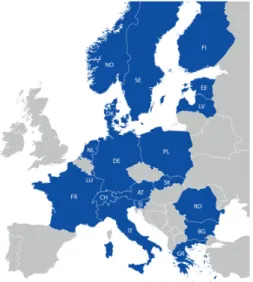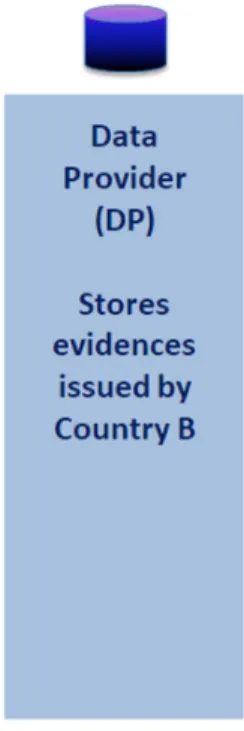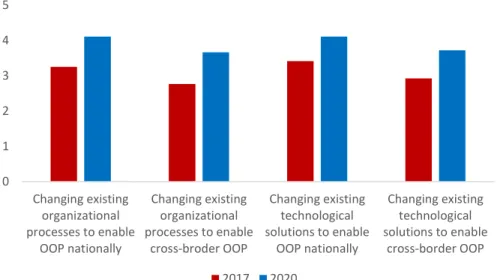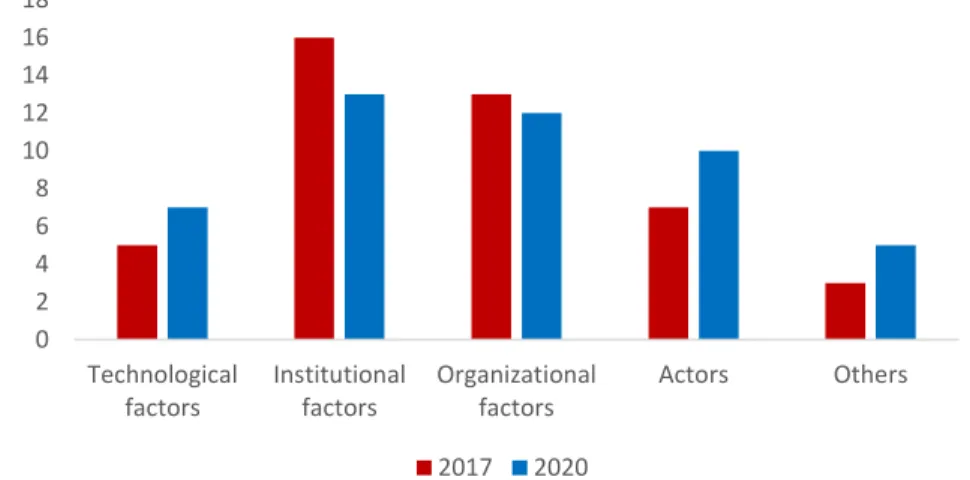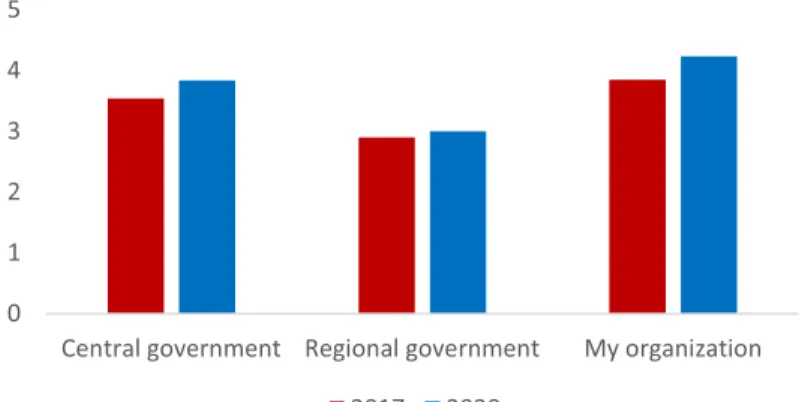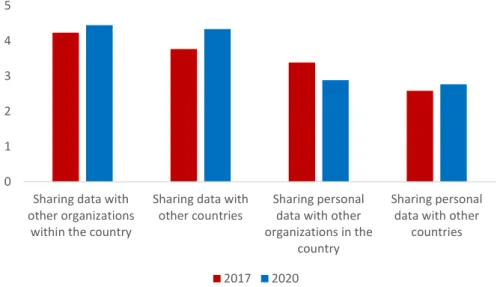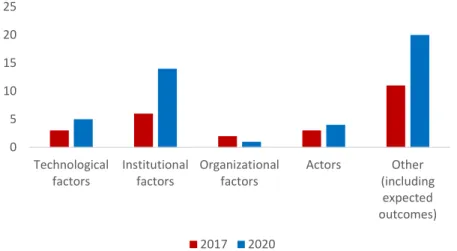The Once Only Principle (OOP) is part of the seven underlying principles of the eGovernment Action Plan 2016-2020. The Once-Only Principle Project (TOOP)” is the EU-funded project initiated for research, testing and implementation of the OOP in Europe.
1 Introduction
OOP is one of the fundamental principles stated in the European Union e-Government Action Plan and the Single Digital Transition Regulation. The partners of the TOOP consortium participated in the project as these national consortia through the main beneficiary.
2 Overview of Large-Scale Piloting in Europe
The focus of these projects has been on supporting EU points of single contact and in the field of e-justice. As a second step within the EU, horizontal (cross-sectoral) projects were introduced, one of the projects (e-SENS) focused on the technical aspects of a generic cross-border data exchange and the other project (TOOP) also focused on the policy aspects of the data exchange.
3 Overview of the TOOP Book
- Implementation of the ‘Once-Only’ Principle in Europe
- Drivers, Barriers, and Opportunities
- Good Practices of OOP Across Europe
- Impact of the Once Only Principle for Businesses Across Borders
- The Single Digital Gateway Regulation and Other Legal Aspects
- Architecture
- Testing Methodology for the TOOP Pilots
- Future of the Once-Only Principle in Europe
The analysis focuses on the different stages and different forms of implementation of OOP in Europe. Drivers and barriers play a significant role for the implementation of OOP in Europe.
4 The Once-Only Principle and the Further Development of the Single Digital Gateway
Siapera, M., Douloudis, K., Dimitriou, G., Prentza, A.: Employing the once-only principle in the domain of the electronic public procurement, pp. The once-only principle (OOP) in the context of the public sector means that citizens and companies only provide data to a public administration once.
2 National Approaches Towards Implementing the OOP
In Luxembourg, the OOP is one of the five e-government principles approved within "Digital Luxembourg". The OOP solutions are often connected to the Points of Single Contacts (PSC) for businesses operating in each member state, following the implementation of the Directive 2006/123/EC on services in the internal market [49].
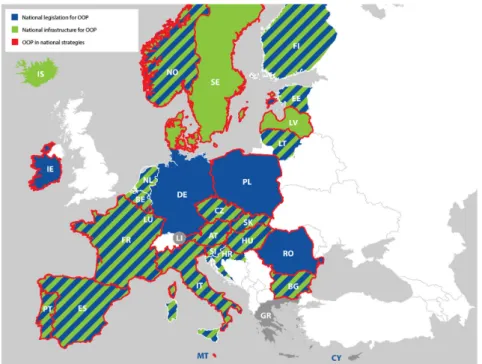
3 Benefits of the OOP
The OOP is expected to save businesses in terms of time spent submitting the same data multiple times and meeting administrative requirements. One example is the Basic Data Program in Denmark, which introduced the OOP for a lot of data collected in 10 electronic registers.
4 Implementing the OOP in the TOOP Project
General Business Mobility
The e-government portal in Germany checks which data is already stored in the Polish register through the TOOP architecture. If the data is available, inform the Polish entrepreneur about it and ask him for his consent to transfer the data directly from the Polish register;
E-procurement
Maritime Pilot
5 Summary
Digital Government Factsheet 2019 – Netherlands.https://joinup.ec.europa.eu/sites/def ault/files/inline-files/Digital_Government_Factsheets_Netherlands_2019_0.pdf. Based on the results of "The Once-Only Principle Project" (TOOP), an analysis was made of the factors that either support or hinder the implementation of the cross-border OOP.
2 The Factors Impacting OOP Initiatives in a Cross-border Context
- Factors Generally Impacting OOP Initiatives in a Cross-border Context The aim of this chapter is to explore the barriers and drivers of cross-border OOP
- Technological Factors
- Organizational Factors
- Institutional Factors
- Actors
- Other Factors
A set of restrictions that are very often present also at the cross-border level (Cave et al. 2017). According to Gallo et al. 2014), removing potential legal obstacles and establishing a good legal basis is one of the most important strategic issues for the implementation of OOP.
3 Methodology
There is an extended analysis of the perceived benefits of OOP in the chapter "Measuring the impact of the once-only principle for businesses across borders" in this book. The focus group sessions were organized in collaboration with the impact assessment team of the TOOP project, so the aim was to analyze both the determinants and impacts of OOP.
4 Results
- Technological Factors
- Organizational Factors
- Institutional Factors
- Actors
- Other Factors
In this sense, the implementation of OOP seems to be heavily dependent on established regulations as well as the key. This is based on the lack of interoperability and credentials defined in Member State eID schemes.
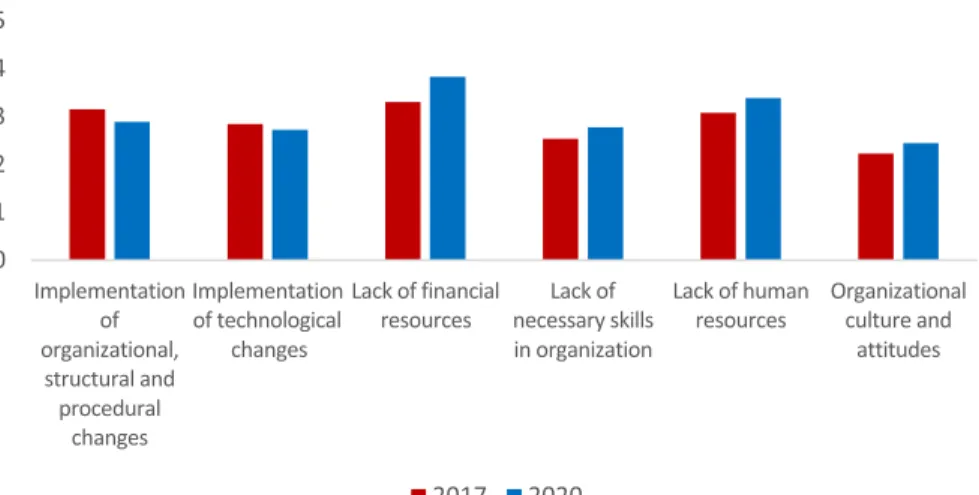
6 Conclusions
The once-only principle is among the seven driving principles in the European Commission's (EC) e-Government Action Plan 2016–2020. The European Union (EU) e-Government Action Plan 2016–2020 commits Member States to modernize public services according to seven principles of public sector transformation in order to contribute to economic growth, jobs and sustainable and resilient societies [16].
2 Theoretical and Political Foundations of the OOP
This contribution aims to summarize the results of the good practice study of the SCOOP4C project. To gather insights from existing OOP implementations, the SCOOP4C project investigated examples of good practice and the once-only enablers.
3 Methodical Foundations
The implementation of the OOP in public services (cf. OOP cases) is supported by a set of enabling components. This task applied a systematic analysis of the OOP cases and enablers for which the data were collected.
4 OOP Good Practice Examples in Europe
OOP Cases
Systems in the Netherlands (Studielink), Estonia (EHIS and SAIS), Ireland (Central Application Office), Portugal (LGDF), Spain (NISUE), UK (UCAS) and the European Student Card (ESC). Government services are supported in the performance of their tasks by web services to unlock relevant data from authentic sources.
OOP Enablers
The use of the Key Registers in the Netherlands offers, among other things, administrative burden relief for citizens and companies, because they do not have to provide information that is already in the hands of the government again. The Portalverbund targets employees of government departments and facilitates access to the various authentic resources and e-government applications in the Austrian e-government applications with the aim of simplifying and realizing the benefits of the OOP for citizens and companies.
5 Discussion and Recommendations from the Good Practices
Benefits of OOP Implementation and the Need for OOP Enablers
Another essential benefit for public administrations in implementing OOP is that enablers such as secure data exchange, ID and trust services, and enabling infrastructures that provide access to quality-assured authentic data sources. In combination with the reduction of administrative burden and more efficient and effective execution of the process, the public administration is facilitated to save costs and to reduce the redundant and error-prone activities of repetitive recording of data already in the hands of the public administration, as the data is obtained from authentic quality-assured sources.
Enablers as a Vehicle to Overcome Barriers of OOP Implementations In order to realize the benefits of the once-only principle for citizens and businesses as
The examples of OOP cases outlined in section 4.1 clearly demonstrate these drivers and benefits to the relevant stakeholders. This contribution explored the implementation of the OOP across Europe by examining existing practices and enabling factors in different Member States.
I: Proceedings of the 40th Annual Hawaii International Conference on System Sciences (HICSS-40), IEEE Computer Society, Washington (DC), Digital Proceedings (2007). I: Proceedings of the 19th Annual International Conference on Digital Government Research: Governance in the Data Age, ACM (2018). https://.
1 Introduction on Once-Only Legislation
- Legal Frameworks for Once-Only at the National Level
- Scaling up the Law to Cross Border Once-Only
- Drawing the Lines: A Closed Model for Once-Only
- User Centricity as the Principal Driver
- Data Protection as a General Consideration Behind the SDGR Applicability of Data Protection Law
- Requirements for the User
- Requirements for Competent Authorities
- Requirements for Evidence
- Requirements for Data Flows
Any implementation of the once-only principle implies the creation of a circle of trust between participating public authorities. Finally, recital (47) of the SDGR also indicates that "the data included in the preview must not be stored longer than is technically necessary".
4 Concluding Notes and a Perspective on the Future
The SDGR as a First Step into a European Once-Only Framework
This is a challenge to the SDGR vision because of the preview requirement – evidence that does not yet exist cannot be previewed, meaning the session will have to be adjourned. However, this provision apparently applies to the payment of a fee by the user to the competent authority requesting evidence of the costs of the administrative procedure.
Once-Only as an Evolving Story of Trust
A specific section is devoted to OOP in public procurement, which is crucial for the development of the European digital single market. First, it will seek to show that the principle is at once closely linked to the constitutional principles of the Italian legal system in the field of public administration and constitutes a natural evolution of them.
2 The Constitutional Basis of the OOP in Italy, as a Fundamental Rule of Administrative Activity and Organization
2 The Constitutional Basis of the OOP in Italy, as a Fundamental Rule of Administrative Activity and Organization. 3 Italian scholars refer to the programmatic rules of the Constitution as a "promised revolution", which has yet to be implemented (as guidelines) with regulatory activity.
3 A First Regulatory Application: Self-certifications and Ex Officio Acquisition of Data and Documents
43 of the law presented a structure very close to the European definition of the one-time principle11[43]. In this regard, however, the consequence of the citizen's spontaneous presentation of certificates for the initiation of an administrative procedure is not clear.
4 The OOP and Public Systems Interoperability
The new department makes use of the experts who have already formed the Digital Transformation Team. 50s in the Digital Administration Code, recently reformulated by the Legislative Decree on Simplification and Digital Innovation29.
5 The OOP in Public Procurement
Communication to the European Parliament, the Council, the European Economic and Social Committee and the Committee of the Regions, 26 September 2003, COM on e-Government. Trust establishment guarantees that the origin and destination of data and documents are authentic (authenticity) and trustworthy (reliability), while security ensures that data and documents are protected from any modification by untrusted parties (integrity) [2-4].
3 Solutions to Establish Trust
It is worth noting that this approach embraces the fundamental issue of "sender identification" as a special case of trust formation. The trust-building process assists the recipient in validating that data, thereby establishing some confidence in the identity of the sender.
4 Establishing the End-to-End Trust
For example, the data consumer to access point and access point to data provider communications trust, routing metadata discovery data, eIDAS node data, DNS server data, AS4 message service data, and central trust list server data does not depend on TOOPRA. The user identification and authentication data, request data and consent data are created during the evidence exchange between the data consumer and the data provider.
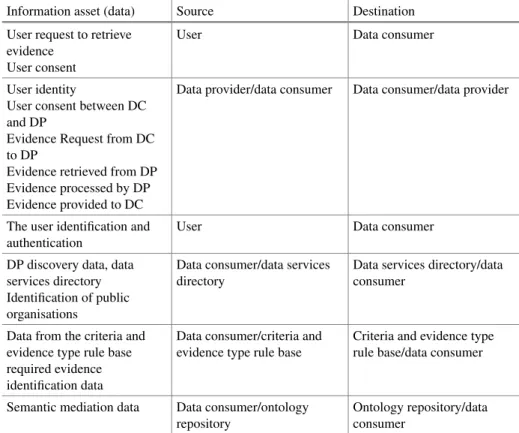
5 The TOOPRA Trust Architecture
The authenticity of the data sent by the DP must be trusted by the DC. Competent authorities and all other participants in the evidence-sharing mechanism should ensure a level of security appropriate to the risk, including, where necessary, the ability to ensure the continued integrity of processing systems and services.
6 Conclusion
A process must be established to regularly test, assess and evaluate the effectiveness of technical and organizational measures to ensure the security of the processing. Regular testing, assessment and evaluation of the effectiveness of technical and organizational measures is necessary to ensure the security of the processing.
